The way employees work and collaborate has been disrupted and employee apps are the way to adapt to these new virtual working environments. With smart technology always in our pockets, employee apps are becoming more and more integrated into everyday business operations. The right set of workplace technology in the right hands can significantly improve your employees’ ability to do their jobs efficiently.
In this blog, we will go over some of the main reasons why every company should consider implementing a modern employee app.
What Are Employee Apps?
When talking about employee apps, we are thinking of a modern, mobile communications technology that enables every employee to receive targeted and timely information from their organization.
📚 Read on: Employee Communication in Healthcare: Trends & Lessons of 2020
In our private lives, mobile communication apps have been playing an essential role for a while now. Employee apps add the same ease-of-use, convenience, and capability to our work lives.
Employers need to finally make sure to engage their people in the way they want and expect, and that is through their mobile devices.
Therefore, now is the perfect opportunity for employers to consider implementing employee apps that can have a positive impact on employee productivity, engagement, and retention at your organization.
Employers need to understand that all generations, especially Millennials and Gen Z, get information on-demand. In their private lives, they get personalized information that reflects their interests, and they expect their employers and colleagues to communicate with them in the same exact manner.
The Importance of Using Employee Apps in the Workplace
Nine-in-10 Millennials (92%) own smartphones, the Pew Research Center found. However, Pew determined that 85% of Gen-Xers and 67% of Baby Boomers own them, too.
Employees are using their smartphones wherever they go, including at the office. According to a study by CareerBuilder, 80% of workers keep a smartphone in view throughout the workday, with two in three acknowledging that they use it at least several times while at work.
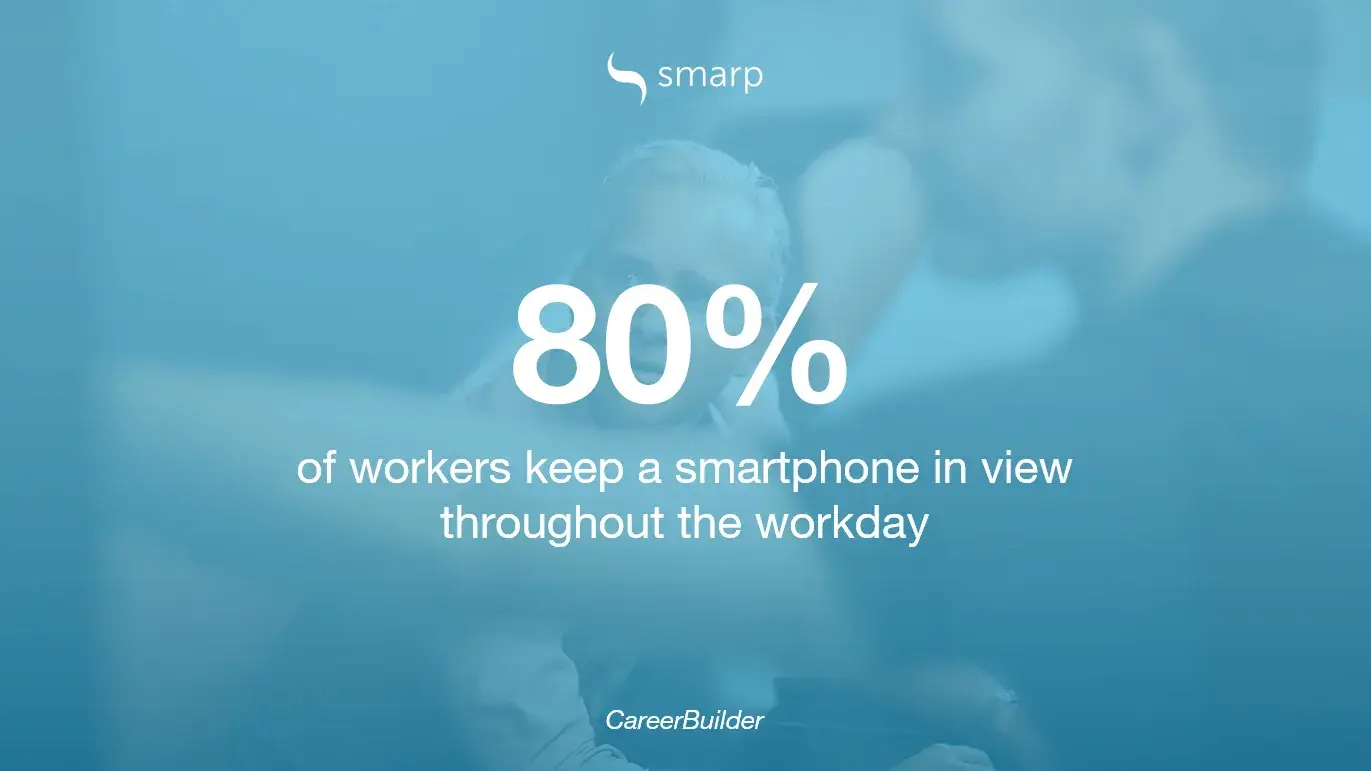
Today’s employees are mobile.
Meaning, they spend a lot of time on their favorite mobile apps that enable them to stay connected with their friends and family to find the information they are looking for and manage their daily schedules.
Guess what…they expect the same experience from technology that they use in their workplaces. Yet, we are still not there!
It seems like the business world has been slow to catch up to the revolution that has been developing in employees’ personal lives for a while now.
Additionally, with the rise of remote work and the importance of communication with deskless, front-line employees, we are witnessing exponential growth in demand for employee apps that are mobile-first and that ensure seamless communication experience in the workplace.
🎧 How to create a dialogue with the hard-to-reach? We had an insightful conversation about it with Maria Ljungbeck, Global Inclusion & Diversity Manager at HEINEKEN in this episode of the Comms Shift podcast. It’s available on all podcast platforms — tune in when you get a chance.
A report done with senior executives, managers, and junior staff shows that companies of all sizes struggle to understand the consequences of poor communication in the workplace.
The effects of communication breakdowns in the workplace can be seen through increased stress levels (52% of respondents), delay or failure to complete projects (44%), low company morale (31%), missed performance goals (25%), and lost sales (18%). To add, companies and organizations that communicate effectively are 4.5x more likely to retain the best employees, and they are more likely to struggle to align employees with the core company values.
The most efficient way to fix this problem is by choosing an app that ensures better communication among employees and drives positive employee experience, engagement and productivity.

12 Reasons to Implement an Employee App at Your Company
How many times have you found yourself looking for work-related information needed to do your job successfully? For most employees, this happens on a daily basis, resulting in a shocking loss of employee productivity and success.
Because they are used to a much easier way to get the information they need, today’s employees expect to have important information right at their fingertips, just like they do in their private lives.
So let’s take a look into the benefits of implementing an employee app in the workplace.
One central source of relevant and useful information
Gallup calls this new era of workplace technology “the golden age of business tech.” When Gallup asked global business leaders whether they agree with the statement, “My company readily implements new technologies that help us to be more productive,” only 17% in the U.S. strongly agreed.
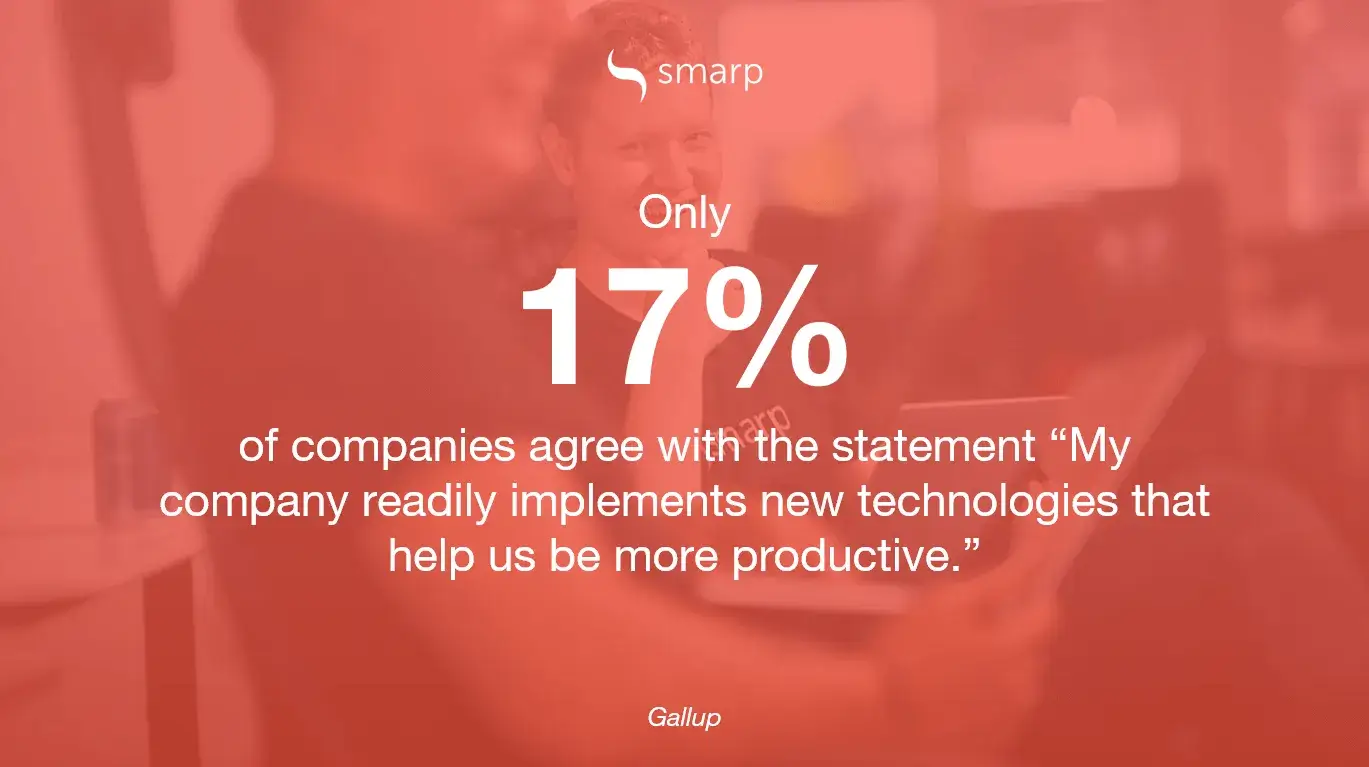
This helps explain why employees, more than ever before, tune out to the company’s communication that is irrelevant to them or is simply delivered through the wrong communication channel.
With the increased information overload in the workplace and the complexity of the communication ecosystem, employees are struggling to stay productive, connected and informed. The impact can be devastating. One study found that once you’re derailed from a task, it takes nearly 25 minutes to get back on track.
The solution to this growing problem isn’t more communication. It’s better communication.
Employee apps aren’t about adding another business communication channel to your organization. It is about eliminating overload, cutting through the noise, and consolidating information into a single source of streamlined, relevant, and personalized internal content.
💡 Also learn about the top 5 communication skills and how to improve them.
One size does not fit all
As mentioned earlier, employees want personalized communication that is easy to consume and fits their roles, locations, age, job functions, and their interests. Only with appropriate employee apps, employers can achieve engagement from their multigenerational workforce.
The days when we would just send a workplace newsletter to an entire organization are gone.
With the emergence of the COVID-19 pandemic, the importance of personalized information is more evident than ever before. Companies have to have a way to create internal audiences and employee segments in order to deliver relevant information no matter where employees are at the moment.
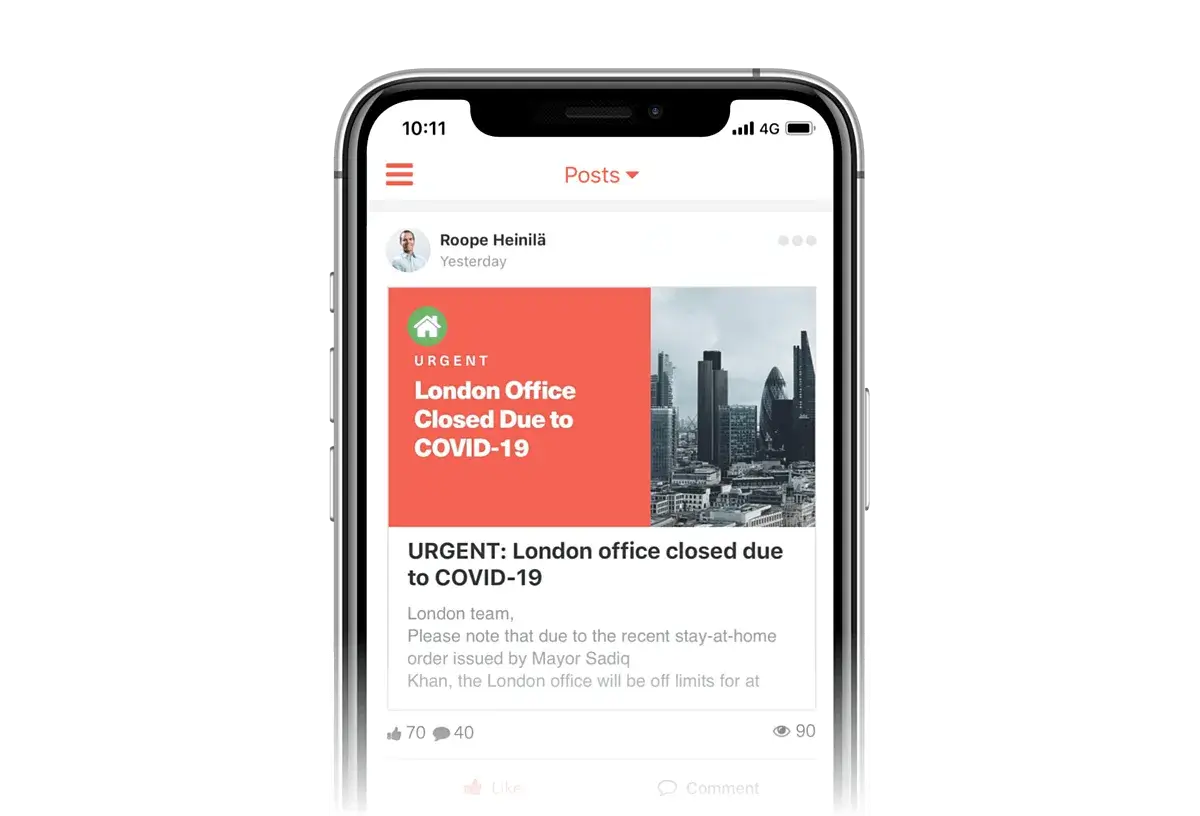
More employee attention to your internal content
Internal communicators, managers, and HR professionals have been struggling with getting attention from employees when it comes to internal content being delivered their way. Not only that internal communicators have to have strong communications skills and be great content creators, but they also need the right employee apps to reach their audiences in a timely and engaging manner.
As employees are used to their favorite messaging apps, employee apps that enable push notifications are also expected in the workplace. If you are trying to find ways to grab your employees’ attention, push notifications have many benefits.
Using an employee app, especially a mobile version, you can send instant alerts right to employees’ phones and get their attention far faster than any email.
Seamless communication with deskless and remote employees
The vast majority of the world’s workers – 80%– don’t sit at desks every day. These deskless, blue-collar workers are on factory floors, walking hospital halls, working in agricultural and construction fields, driving trucks, waiting on tables, and operating retail cash registers.
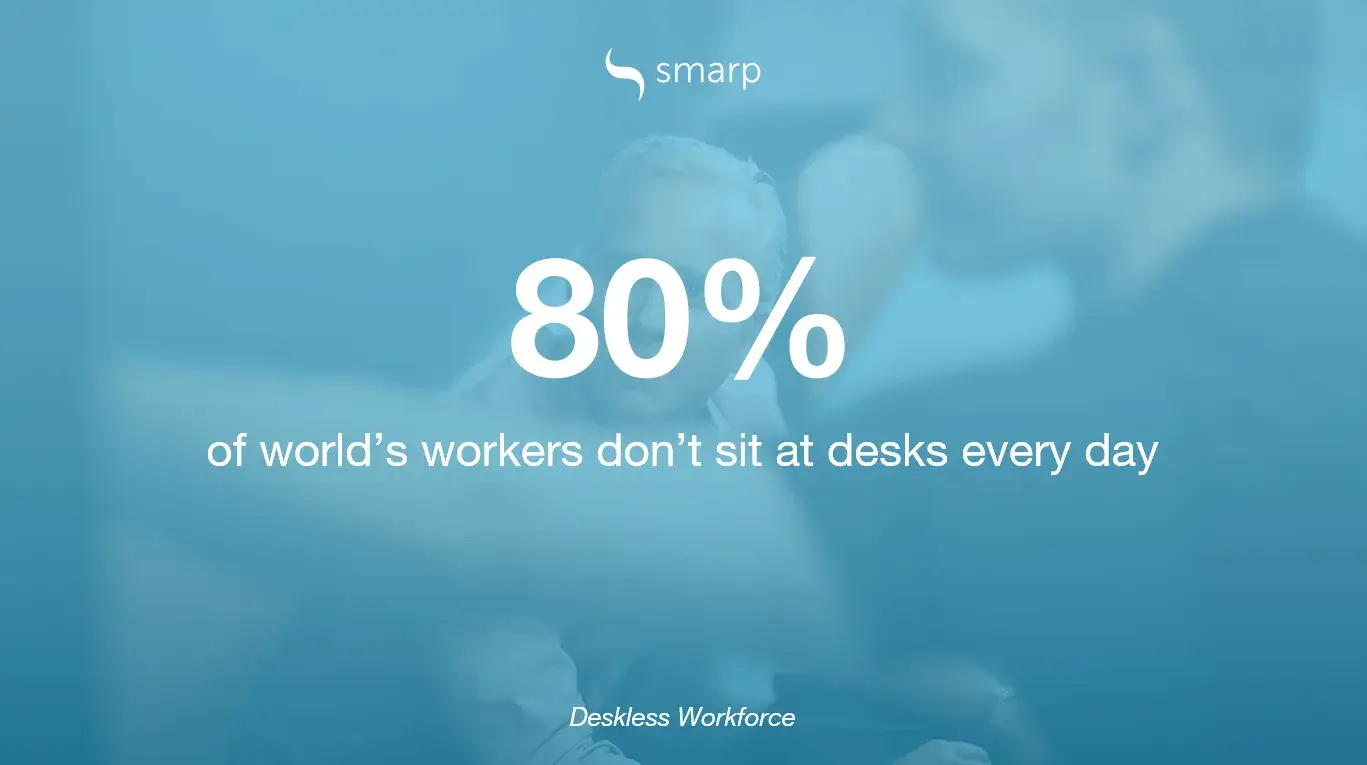
They also might not have access to the company’s intranet or email, making them feel uninformed and isolated from the rest of the workforce.
As the importance of reaching out to blue-collar employees has increased significantly this year, so did the implementation of mobile apps in the workplace.
In order to keep them informed about the latest company updates and safe by sharing important safety tips, organizations were forced to find new software solutions that would enable them to send instant notifications to their mobile phones. Moreover, employee apps like Smarp provide an out-of-the-box feature with which employers can automatically import content from trusted sources and regulatory bodies.

Luckily, there is one thing that all these employees have in common. They all have mobile devices, and employers have to use this fact to streamline and optimize communication with non-wired employees.
🎥 Also watch our webinar about how to engage distributed workforce!
Better user experience and higher user adoption
Some employee app platforms are built with the needs of today’s businesses and workers in mind. When you consider most intranet providers, outdated and unintuitive user interfaces and design are one of the most common reasons for employees’ disengagement and low usage rates.
As the usability of such communication technology is integral to actually improving employee experience, employee app functionalities should be adapted to your employees’ needs and preferences around how they want to engage with information.
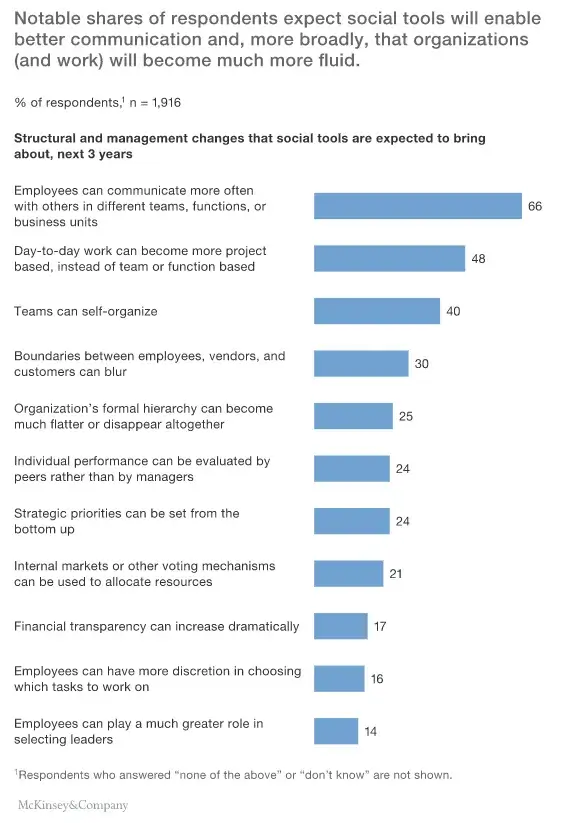
Some employee apps also offer gamification functionalities that many intranets or emails lack. As a result, the content delivered via employees apps is much more fun, easy to consume and engage with.
Gamification within employee apps as well as a variety of multimedia such as video, podcasts, infographics and images, take the notion of internal content to another level, motivating your workforce to not just consume the content but also engage with it on a daily basis.
💡 Related: If your organization is currently using an outdated intranet, check out this guide for choosing a smarter intranet alternative.
Personalized, more creative communication that drives positive employee experience
93% of comms pros say creativity is important in internal comms, but only 6% think it’s used to its full potential, according to a study by Alive With Ideas. A lot of IC professionals think creativity is essential to internal communications, but most of them are missing a huge opportunity to actually put it to use.
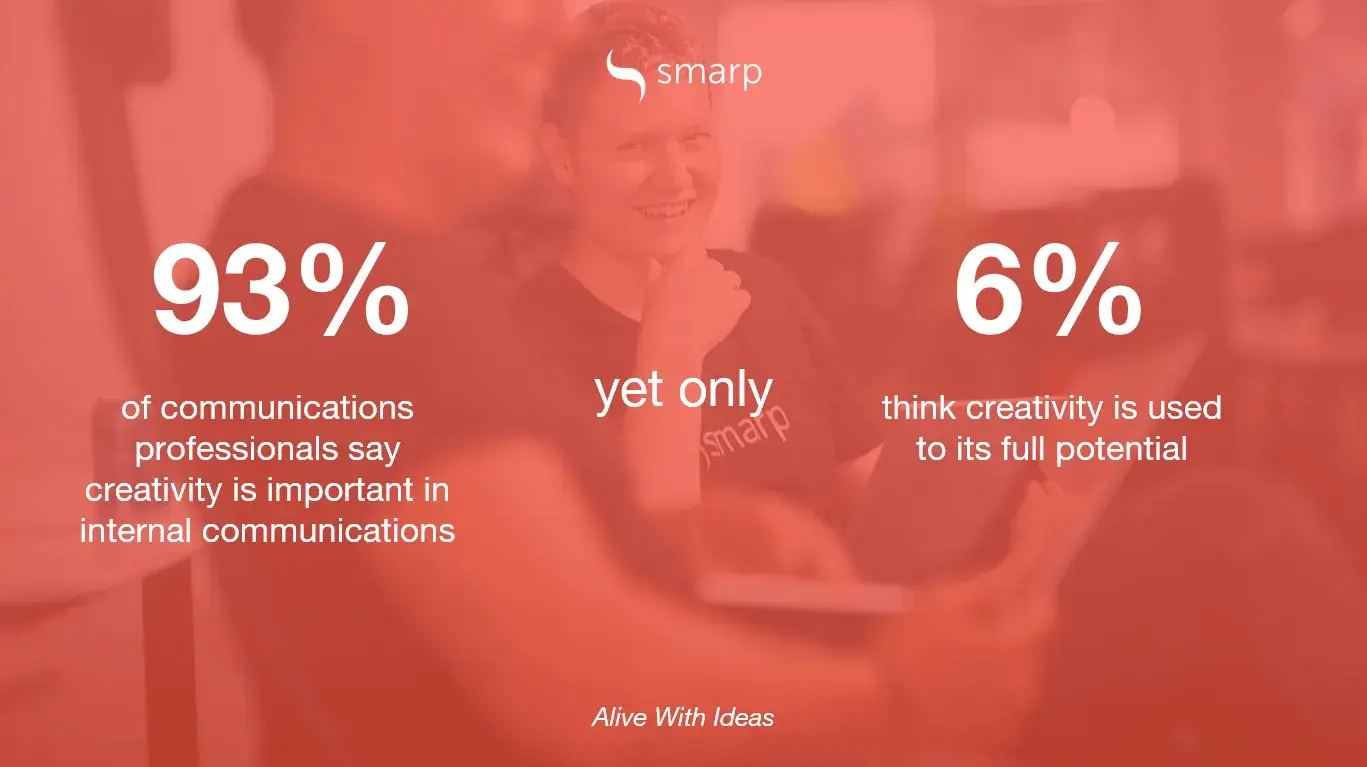
The biggest culprit for that is the lack of content personalization. Even though some intranets and email providers offer basic audience segmentation functionalities, they are often not enough.
On the other side, employee apps offer much more personalization and flexibility for employers. For example, organizations can send geo-specific content based on their employees’ locations, functions, and interests. Additionally, employees can personalize their screens and news feeds in a way to have instant access to the information that is most relevant and important to them.
💡 Also learn about the top 15 employee motivation tips.
Better collaboration between peers, manager, and departments no matter the location
In their private lives, employees are used to collaborating via their mobile devices. Once employees learn to collaborate using their mobile devices, it becomes increasingly important to have this capability. Research shows that, even though 49% of employees use mobile devices for collaboration, most business professionals (92%) say it is vital to have this ability.
According to an Alfresco survey of more than 753 business professionals, it was found that nearly 83% of professionals depend on technology to collaborate. 82% of the participants also felt that they would feel impacted if this technology to collaborate was lost.
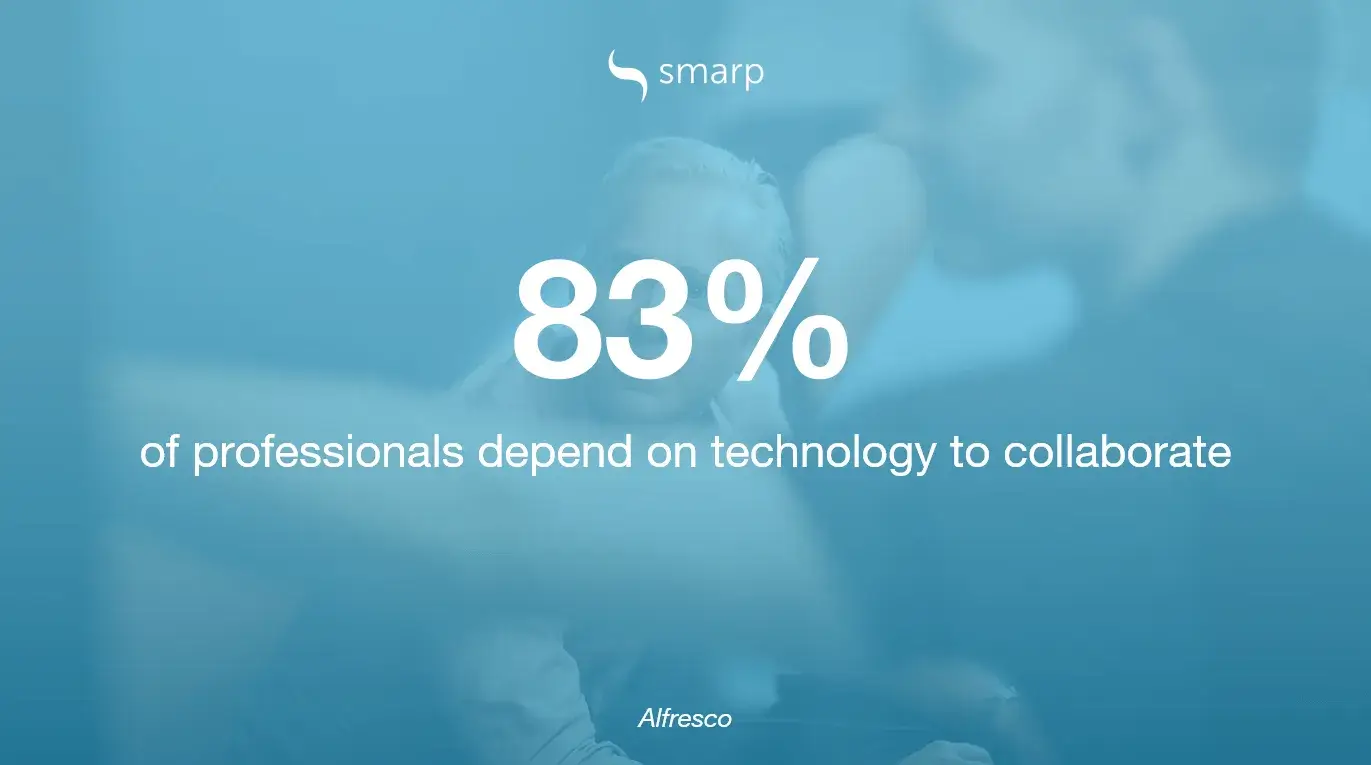
According to a recent study, 51% of employees say they use mobile messaging at least once a day for collaborating on work-related tasks. Another research shows that of employees who collaborate on their mobile devices, 44% consider access to collaboration technology on their mobile devices to be very important.
Because modern professionals live a connected lifestyle in which they can be productive from anywhere and from any device, mobile is now playing a vital role in professional collaboration.
When intranets were first introduced to the IC and HR community, their main goal was to share information, upload documents that employees should read, and to equip employees with more information in order to drive their engagement. Even though they can still serve those needs, today’s employees expect much more from communication technology.
Unlike intranets and similar solutions, employee apps also keep employees connected daily and ensure seamless cross-functional collaboration.
Open and transparent communication where everyone’s voice is heard
Feeling heard and understood is a basic human need. In a workplace setting, employees need to feel heard by their managers. This is one of the most neglected factors of a healthy employee-manager relationship.
With employee apps, communication in the workplace goes two-way. This way, managers and employees can easily collect valuable and on-the-spot feedback. They enable companies to have personalized conversations with each person – as an individual. It is like you’re having a one-on-one conversation where an employee can provide instant feedback. This can happen in the form of liking a post, making a comment, or offering opinions in real-time.
As understanding employees’ sentiment is crucial for improving their experience, engagement, and retention, organizations need to invest more in equipping their managers with apps that support and encourage open and transparent workplace communication.
Less stress, more engagement, and productivity
Today, employers still expect from their employees to search through a clunky Intranet or crowded inboxes to find important information, not understanding the level of frustration and stress this causes.
Filtering through hundreds of emails and other channels to find what’s essential is extremely time-consuming and frustrating, causing lower employee engagement and productivity.

Employee apps are designed to eliminate that frustration. It creates a frictionless, positive experience that is very similar to how we receive information in our private lives. Everything you need and want is at your fingertips.
Stronger connections among peers and managers
Every manager strives to build a more vibrant, closer, and deeper connection with their employees.
However, directors and middle managers are the corporate roles most frequently affected by communication breakdowns. Nearly half (49%) of director-level respondents claim that miscommunications happen frequently or very frequently at work.
With the need to communicate upwards to the C-suite, downwards to employees, and to various departments, mid-level managers are often in need for better communication solutions such as modern employee apps in order to optimize all their communication efforts.
Easier Change and Crisis Management
During the past few months, we have witnessed how important crisis and change management are for organizations. Constant change, remote work, keeping employees safe and healthy have all had a significant impact on how those two departments operate.
When this is happening, the number one prerequisite for a successful change is employees’ alignment and buy-in. When employees understand the importance of your mission and your new initiatives, they are much more likely to work together towards the same goals.
In these situations, it is critical for crisis, change management and internal communications teams to have access to an appropriate employee communication app via which they can easily update and inform the entire organization and get their designated attention.
Employee advocacy
Modern employee apps also offer mobile-first employee advocacy features that empower your employees to be your best brand advocates.
As leaders from departments such as sales, marketing, and human resources are now trying to better leverage their own employees’ networks to achieve specific business KPIs, it makes sense to look for solution with such features.
With employee advocacy apps, your employees can easily share your organizations’ content externally, reach much bigger audience, and build trust with their followers.
Valuable data and insights
The traditional ways of measuring communication in the workplace or the adoption of a new initiative are very limited. You may measure how many emails were sent or how much content was posted on your intranet. However, those “analytics” can’t measure data around who and how it consumes what type of content.
On the other hand, modern employee apps such as Smarp offer valuable insights into the performance of the internal content. Metrics include data about the employees’ activity, engagement, content performance, and data around external content sharing. Ultimately, communicators can make data-driven decisions and refine their strategy so that it better fits their employees’ expectations and preferences.
The Future of Employee Apps
More and more executives across the world have started to understand significant benefits from using a new generation of employee apps that could replace email as the default channel for workplace communication.
Historically, social technologies have been used most often with customers and in external processes. Today, however, such technology promises new levels of internal benefits and, eventually, better employee communication. While employee apps are still somewhat novel, many companies have a lot to gain by using them to improve the ways their employees work.
Also, as organizations face growing demands to become more agile, modern workplace technologies will enable companies to experiment with new corporate structures and more self-organizing and less hierarchical processes.
Therefore, organizations are now looking for employee apps that focus on next-generation features, enhanced searchability, a well-designed user experience, easy integration with other applications used in the workplace, and, of course, the ability to measure everything.
Choosing the Best Employee App for Your Organization
Choosing the best employee app for your organization is not an easy task. As every company has different challenges and goals, it is important to choose a solution that best fits your organization’s needs.
Moreover, different employee apps may have very different features and functionalities. Hence, understanding them all may be a tall order for employers.
In general, when choosing an employee app, some of the must-haves should include:
- Seamless mobile experience
- Content personalization and localization based on employees’ job functions, locations, spoken languages, and their interests
- Ability to find and consume important information and documents in seconds
- Push notifications for emergency situations
- Ability for employees to create and share their own content (user-generated content)
- Ability to include every employee, even the frontline workers without company emails or a designated working spaces
- Integration with other solutions such as Slack, Microsoft Teams, SharePoint, email, intranet, and other workplace technology
- Robust analytics and reporting









